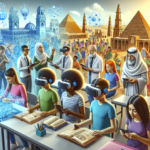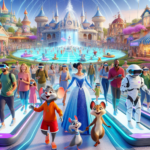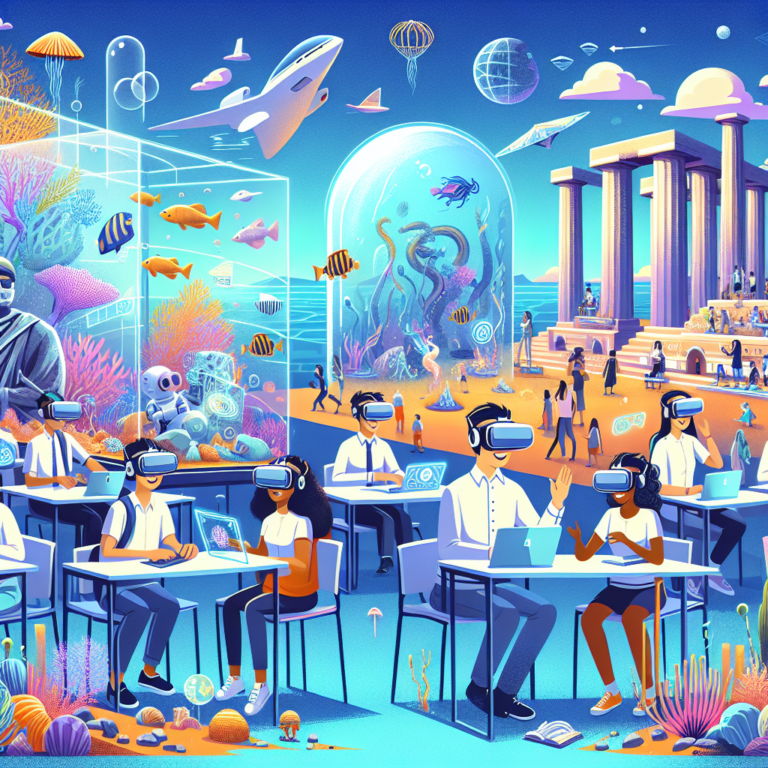Transforming Education: The Potential of XR Technology in Crafting Immersive Remote Classrooms 🚀
The Dawn of XR Technology in Education
As we navigate the rapidly evolving landscape of education, one thing is clear: traditional methods are quickly becoming outdated. Enter Extended Reality (XR) technology, an innovative blend of Virtual Reality (VR), Augmented Reality (AR), and Mixed Reality (MR). These groundbreaking tools promise to revolutionize remote learning by creating fully immersive classrooms that engage students like never before. Imagine a world where students can explore the depths of the ocean or walk the halls of ancient civilizations—all from the comfort of their own homes! 🌊🏛️
Understanding XR Technology
Before we dive into its impact on remote learning, let’s break down what XR technology is all about.
What is XR?
XR encompasses a wide array of technologies that enhance or create experiences through digital means. Here’s a deeper look:
- Virtual Reality (VR): Immersive experiences that transport users to a completely different environment using headsets.
- Augmented Reality (AR): Overlaying digital information within the real world, enhancing our perception of reality.
- Mixed Reality (MR): Combining both virtual and real-world elements, allowing interaction between users and virtual objects.
These technologies can dramatically change how education is delivered, encouraging interactivity and exploration that are often absent in conventional classroom settings.
The Challenges of Traditional Remote Learning
The COVID-19 pandemic has highlighted both the strengths and weaknesses of remote learning. While it has made education accessible to many, it also comes with its fair share of challenges:
- Lack of engagement: Students often find it hard to stay focused during virtual classes.
- Limited interaction: The inability to interact with peers or teachers in a physical space can lead to feelings of isolation.
- Technological barriers: Not all students have access to reliable internet or modern devices, exacerbating the digital divide.
These hurdles have pointed educators and technologists towards a new solution: XR technology.
How XR Technology is Shaping the Future of Remote Learning
Imagine stepping into a classroom that feels real. With XR, students can experience a transformative learning journey. Let’s explore how XR can tackle the challenges mentioned above:
Enhanced Engagement
| Immersive Learning Environments: | With XR, students can engage with interactive landscapes—from exploring the cosmos to undergoing a virtual dissection in biology class. This transformational approach grabs students’ attention and keeps them involved. |
Fostering Collaboration and Communication
In a fully immersive XR classroom:
– Students can work on collaborative projects in real-time, regardless of their physical location.
– Virtual study groups can form, allowing peers to discuss and brainstorm ideas together.
– Teachers can guide students through complex concepts with hands-on demonstrations that make learning memorable.
Personalized Learning Experiences
XR technology allows for customized educational journeys:
– Students can learn at their own pace, revisiting complex topics as needed.
– Adaptive learning algorithms can tailor the curriculum to meet individual student needs, strengths, and weaknesses.
– Gamification elements embedded in XR create a fun and motivating learning environment. 🎮
The Real-World Applications of XR in Education
Several educational institutions and tech-forward organizations are already experimenting with XR technology:
1. Virtual Field Trips
Imagine going on a field trip to the Great Wall of China without ever leaving your classroom. XR allows students to explore historical sites and natural wonders, enhancing their understanding of different cultures and sciences. 🌍
2. Interactive Science Labs
No more hazardous materials or complicated setups! XR can recreate laboratory experiences where students conduct experiments in a risk-free environment. They can visualize cellular structures or chemical reactions in ways never possible before.
3. Language Immersion Programs
Language learners can sit in a virtual Parisian café or navigate the bustling streets of Tokyo, immersing themselves in the culture and communication without stepping foot outside their home. The potential for real-life language practice enhances retention.
The Future of XR in Education: What Lies Ahead?
As XR technology continues to advance, its impact on education will only grow. Imagine classrooms equipped with headsets and interactive 3D environments that keep students engaged for hours—all while fitting seamlessly into their daily routines.
1. Bridging the Digital Divide
One of the significant benefits of XR in education is its potential to democratize learning. By investing in affordable XR devices and internet access, schools can ensure every student has access to these immersive experiences.
2. Teacher Training and Resources
For XR to be effective in the classroom, teachers must be well-equipped and trained to leverage these technologies. Education programs focused on XR can prepare educators to create meaningful learning experiences.
3. Continual Development of XR Content
As more educators adopt XR tools, there will be a growing demand for high-quality, curriculum-aligned XR content. Partnerships between tech companies and educational institutions could pave the way for a wealth of resources.
Final Thoughts: A New Era for Learning
The potential for XR technology to revolutionize remote learning is boundless. By creating fully immersive classrooms, we can engage students like never before, fostering collaboration and providing personalized learning experiences. As we step into this new era, the question remains—are educators ready to embrace the change? Only time will tell, but the future of education looks bright with XR on the horizon! ✨




0 Comments